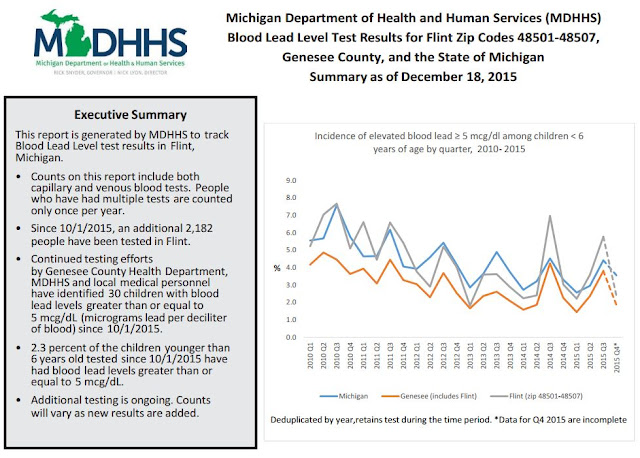National Patterns in Environmental Injustice and Inequality: Outdoor NO2 Air Pollution in the United StatesThey tell us in the abstract:
"For example, we estimate that reducing nonwhites’ NO2 concentrations to levels experienced by whites would reduce Ischemic Heart Disease (IHD) mortality by ,7,000 deaths per year..."I have been looking at their data, and their claim of a 7,000 reduction in IHD deaths, in the last three posts. In Part 3 I wrote this:
To me, this calculation of 7,000, or 6,579, or 5,638 is not within the realm of reality. Could NO2 contribute to 5,000 plus IHD deaths per year? Yeah...that's possible if Jerrett's RR of 1,06 is a direct result of an increase in NO2. [Bowman]Here is what I come up with when I looked at their data.
Let's assume some things first.
- The relative risk for IHD with 4,1 ppb NO2 is 1.06.
- The incidence of IHD mortality is 109 per 100,000
- The population and concentrations for NO2 for 448 urban areas in the US as found in the Excel spreadsheet file "journal.pone.0094431.s001.XLSX" are valid.
- The column in that Excel file called "Difference Between LIN and HIW (ppb)" is a valid number.
I am writing this in "real" time, so from this point on, I have no idea what my way of calculating this is going to show.
To start, I needed to know what percent of nonwhites fall below the poverty line. That line seems to be consistent with what the Clark et al authors use for their "Low-Income Nonwhite (LIN) Population-weighted Concentration (ppb)"
I asked Google to get me this information and I found a reputable site with this information.
Next, I went looking in the Excel spreadsheet for the urban areas where the authors calculated a difference between the Low-Income Nonwhite (LIN) Population-weighted Concentration (ppb) and the High-Income White (HIW) Population-weighted Concentration (ppb) of greater than 4.0 ppb.
I chose 4.0 ppb to be consistent with the author's claim that "average NO2 concentrations are 4.6 ppb (38%, p,0.01) higher for nonwhites than for whites" and to be close to the relative risk of 1.06 reported by Jerrett et al for 4.1 ppb NO2.
Okay...I think I am being reasonable and fair here. Let's start.
Assuming that a 4.1 ppb difference in NO2 is associated with a 6% increase in risk for IHD mortality, what was the population of the 448 urban areas where the difference between the low income folks and the high income folks was greater than 4 ppb?
Time for another assumption. I am going to assume that the IHD morality is 109 per 100,000 for the white population in the HIW area.
Let's do another assumption. Let's assume that within these 12 urban areas the percentage of nonwhites is 40%.
That would mean that the nonwhite population in these 12 urban areas where there is a difference of at least 4.0 ppb NO2 between low income nonwhites and high income whites, is 18.1 million nonwhites.
Looking at the low income percentages provided by the Kaiser Family Foundation,
- 26% of Blacks are low income (26% of 18.1 = 4.7 million)
- 24% of Hispanics are low income (24% of 18.1 = 4.3 million)
- 15% of Other nonwhites are low income (15% of 18.1 = 2.7 million)
This equals a total of 11.7 million nonwhites living in areas where the difference between NO2 population-weighted concentrations for high-income whites and low-income nonwhites is greater than 4.0 ppb.
Assuming that there is a 6% increase in IHD mortality risk for 4.1 ppb NO2, a risk of 109 per 100,000 for high-income whites would rise to 116 per 100.000 for low-income nonwhites. There would be an additional 7 deaths per 100,000 for a total added deaths from IHD for these 12 urban areas of 823.
Using the same language as in the abstract:
Reducing low-income nonwhites’ NO2 concentrations to levels experienced by high-income whites in 12 urban areas would reduce Ischemic Heart Disease (IHD) mortality by 823 deaths per year. [Bowman]
For that number - 823 - to be correct, the relative risk for NO2 must be 1.06 for 4.1 ppb NO2 and the concentration of NO2 for 11.7 million nonwhites must be 4 ppb higher than for their white neighbors living in the same urban area.
Well that was a fun way to spend my vacation on Friday and this rainy Saturday.
To conclude...there will not be a savings of 7000 nonwhite lives if we lower the concentration of NO2 to that which whites experience. At best I calculate 823 and that number is based on a lot of assumptions all being correct.
Thanks for reading
Jeff
































